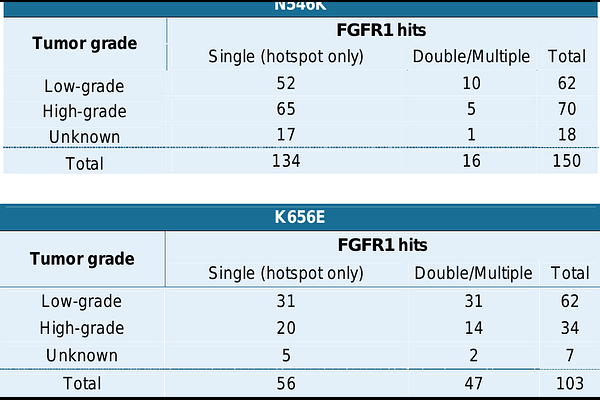Multiple FGFR1 mutations modulate tumorigenic mechanisms in glioneuronal tumors.

Multiple FGFR1 mutations modulate tumorigenic mechanisms in glioneuronal tumors.
Boni, J.; Fernandez-Gonzalez, M.; Han, H.; Roca, C.; Wong, C. J.; Rioja, C.; Nogue, C.; Manen-Freixa, L.; Boulais, J.; Torres-Urtizberea, E.; Gomez, A.; Hasselblatt, M.; Estrada-Tejedor, R.; Antolin, A. A.; Elkholi, I. E.; Jabado, N.; Cote, J.-F.; Gingras, A.-C.; Rivera, B.
AbstractFGFR1 genetic alterations are associated with human diseases, including brain tumors. We reported multiple FGFR1 mutations in familial and sporadic cases of low-grade glioneuronal tumors, suggesting intrinsic mechanisms of selective pressure toward FGFR1 multiple events arising in the context of a quiet genome. To decipher the molecular mechanisms triggered by multiple FGFR1 mutations, we have mapped the proximal interactome of wild-type, single- and double-mutant FGFR1 proteins through a BioID-MS approach. Our data reveals novel oncogenic functionality for the two hotspots N546K and K656E, linked to evasion of lysosomal degradation. We identified a modulatory role played by the susceptibility variant R661P, which hampers the oncogenic potential of both hotspot mutations by rescuing receptor degradation and reducing N546K affinity for the downstream effector PLC-gamma. The R661P variant alone abolished the self-renewal capacity of oligodendroglioma cells and showed downregulation of genes involved in neurodevelopment and neuro-glial cell fate decisions, both aspects overcome in the double mutants. This study sheds light on the oncogenic effects associated with FGFR1 alterations and their recurrence in low-mutation burden and therapy naive tumors.